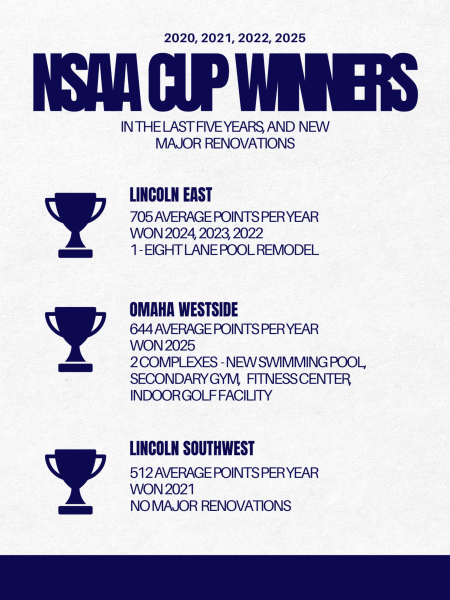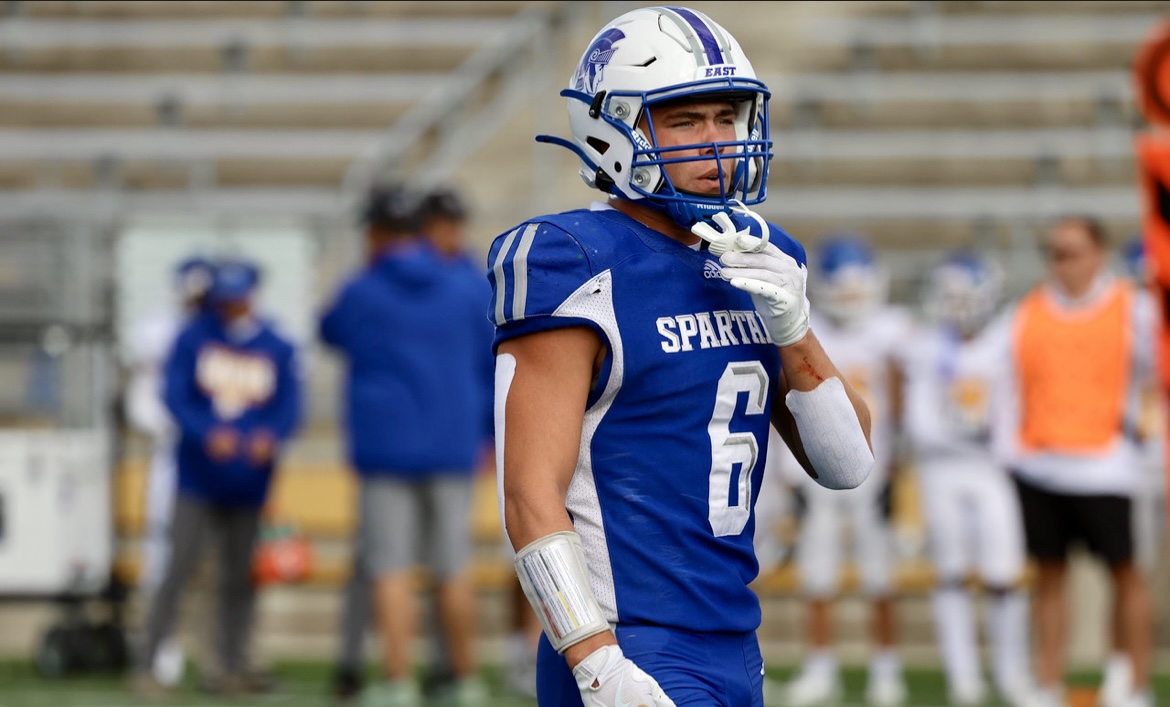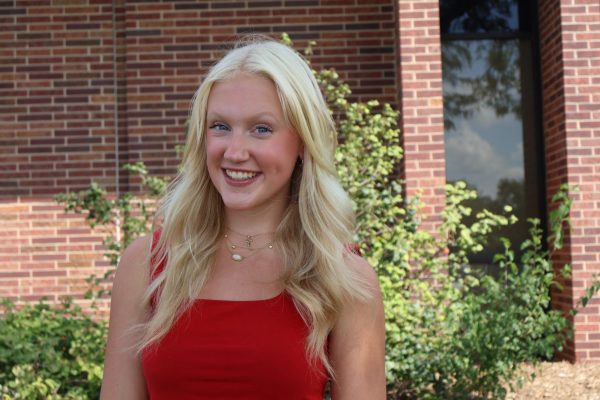$34 million is being poured into improving Omaha Westside High School. An eight lane pool, performance and wellness center, innovation lab, sports medicine center, family resource center, and college and career readiness center will be ready for students in the spring of 2026. In fall of 2026, Millard Public Schools students will have access to 54,000 square feet of hardwood courts, 5,000 square feet of indoor turf, with classrooms, training gyms, esports arenas, and an outdoor adventure course.
Students fear for the future where a great team is only determined by the amount of donations a single booster club can obtain, a world where athletics are less of a competition between the best trained, but a competition between who has the fanciest of facilities.
Many look at Millard South's 4-1 football record – their one loss being a forfeit on a 1,300 mile journey to Las Vegas’s Arbor View – and panic. In Nebraska, Millard South is putting up 77-0 scores against teams like Lincoln Southeast with ease. Students and parents see scores like this mixed with groundbreaking facilities as the end to the enjoyment of football as we know it.
And it’s not just football. Lincoln East’s own baseball and tennis team are going through the very same situation. Spartan boys tennis have won state four years in a row, girls three out of the last four years. In 2025, the program swept State, with Lincoln East winning every division, a success that made state history. Lincoln East baseball continues to dominate, placing in the top ten at Nationals, top two at State in the last three years, winning in 2025 and 2023.
Students, athletes, and parents press the panic button. Athletes all over the state are now transferring at record levels. Is the fear of not having every opportunity available for athletes outweighing the opportunity they may have at their own school?
“Over the last three years, nearly 1,500 high school athletes have switched teams without having to sit out under the state’s loose transfer rules,” Jeff Johnson, associate director of the Nebraska School Activities Association, said to Jeremy Turley in the Flatwater Free Press article “Friday Night Blowouts: How transfers shifted competitive balance in Nebraska high school sports”. “At the highest level, the consolidation of talent has tipped the scales of competitive balance.”

Many may think that it is resources driving athletes, although one of East’s own transfer athletes, Will Manning came for a different reason.
“I came just knowing that East had a good culture set in place and that they were winning and had a coaching staff that had been around a while, and then a good group of guys,” Manning said.
Joe Schlegelmilch, Lincoln East’s Assistant Athletics Director agrees.
“One factor is the continuity of coaches… It seems like the staff who are together longer tend to be able to keep kids, that isn't always the case, but it definitely helps,” Schlegelmilch said.
Facilities don’t drive athletes to transfer. And facilities don’t create success.
Even without a multi-million dollar facility, East is winning. With its 18 state championships in the last five years, the Spartans have earned numerous NSAA Cup wins in those five years as well, making it one of the top athletic schools in the state.
“Some that have really invested in facilities are having great success and others aren't having as much success,” Schlegelmilch said. “So is it the facilities? Is it talent? Is it coaching? What is it? It's probably a little bit of all of those.”
It is coaching. It is the team environment. It is the talent. It is the drills, not only facilities. These ten million dollar buildings are causing less of a factor than many believe.
“I would say it's mostly the coaching and the guys that are leaders on the team, because they really set in place the culture and how hard everyone's going to work,” Manning said. “Because you can only be as good as your worst player. So if everyone's uplifting each other, then the whole team's going to be good.”
More agree, such as Mike Sautter, longtime sports reporter, isn’t impressed by the facilities, and recognizes the real cause. Yes, facilities can always be improved but teams that are struggling are lacking consistent coaching and talent.
“The state’s best programs — Millard South and Westside — have earned their success by doing a tremendous job of coaching, promoting players on social media and helping them reach the collegiate level," Sautter said to Flatwater Free Press.
The Sport Journal's article "The Impact of Head Coach and Student Athlete Decision Making in the Transfer Portal Era of College Sports" by Howard Bartee used various studies to prove that the decision of athletes in the transfer portal to transfer to a new school is highly determined by how the coaches experience, specifically if they had experience coaching or playing in NFL. This same observation trickles down to high school athletes. An athlete sees a long time coach at a school, or a former NFL player, and it may influence their decision to transfer.
Despite what many may think, these facilities aren’t making or breaking the teams. Millard South has great homegrown talent today, and in a couple of years, that may not be the case.
”There's just disparities and those tend to go in cycles,” Schlegelmilch said. “Even the teams at the top don't always stay at the top, and then some other team comes along.”
Sports always have disparities. Dating back to 1912, there were blowout football scores. According to the NSAA record book, John Cook of Beatrice still holds the record for biggest blowout in football, the team reaching 98 points in one game.
These major score discrepancies are being overdramatised. Schools have always had blowouts, and the two things that will make a major impact is coaching and talent – Not fancy facilities alone.




